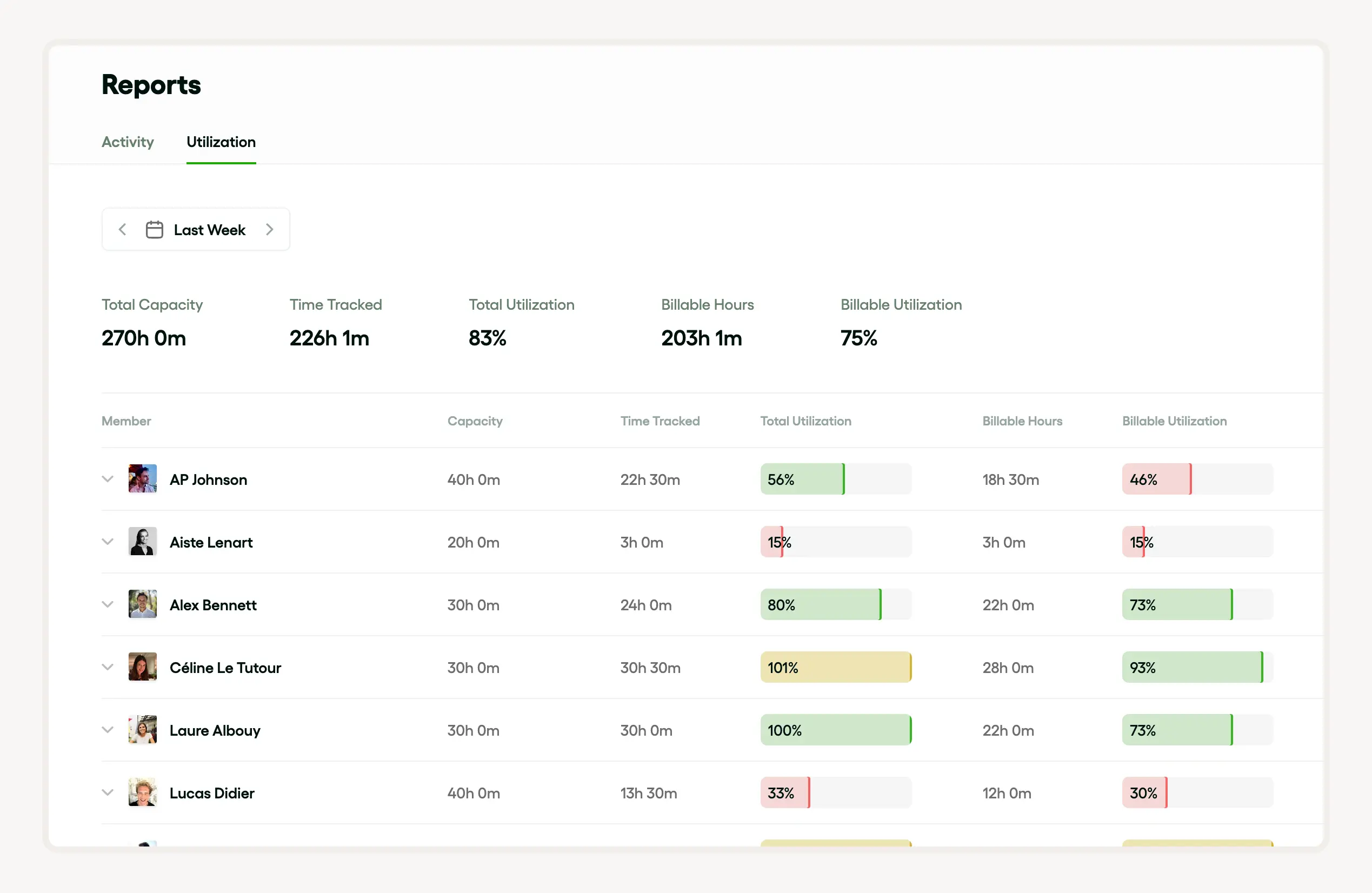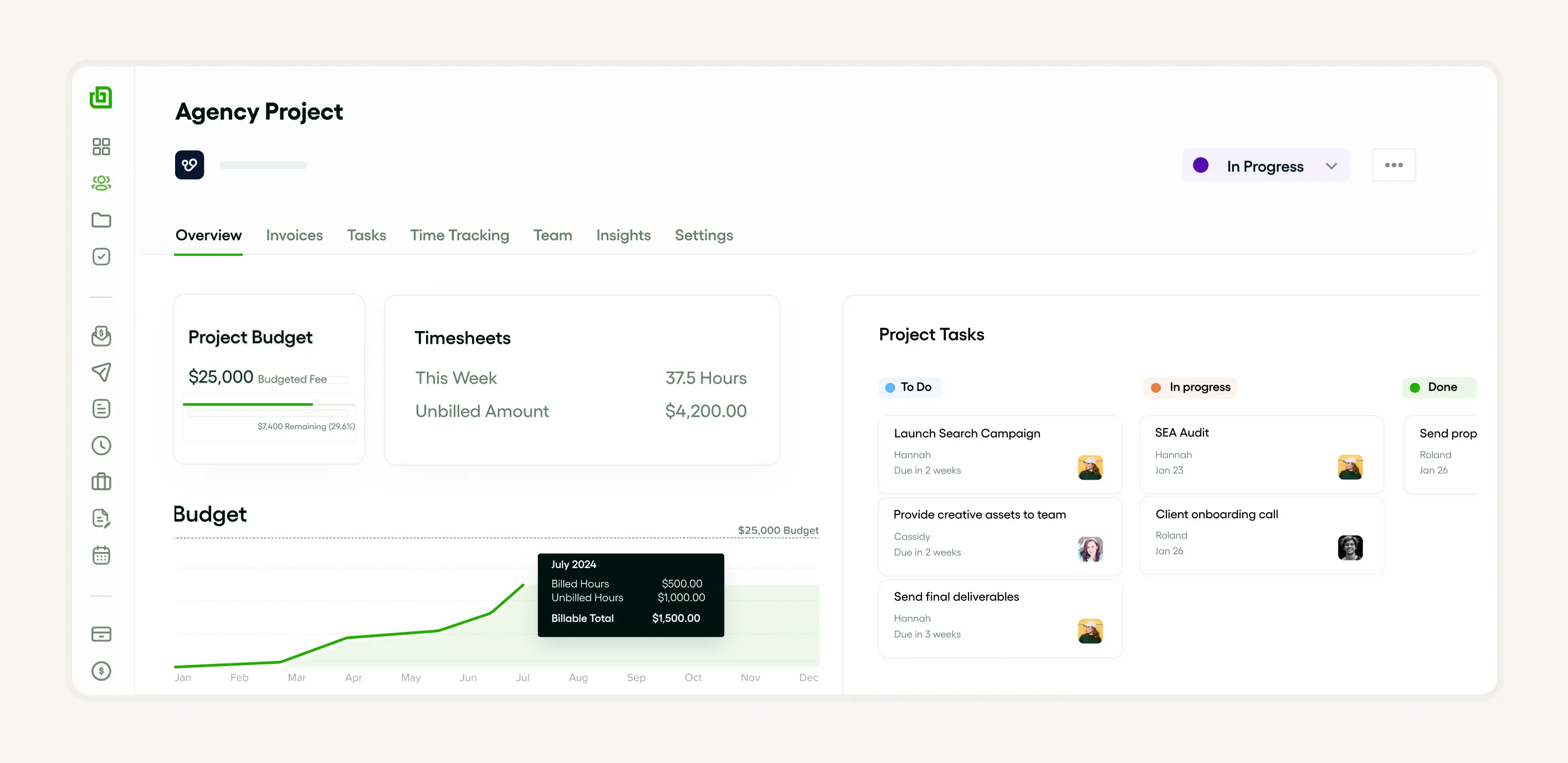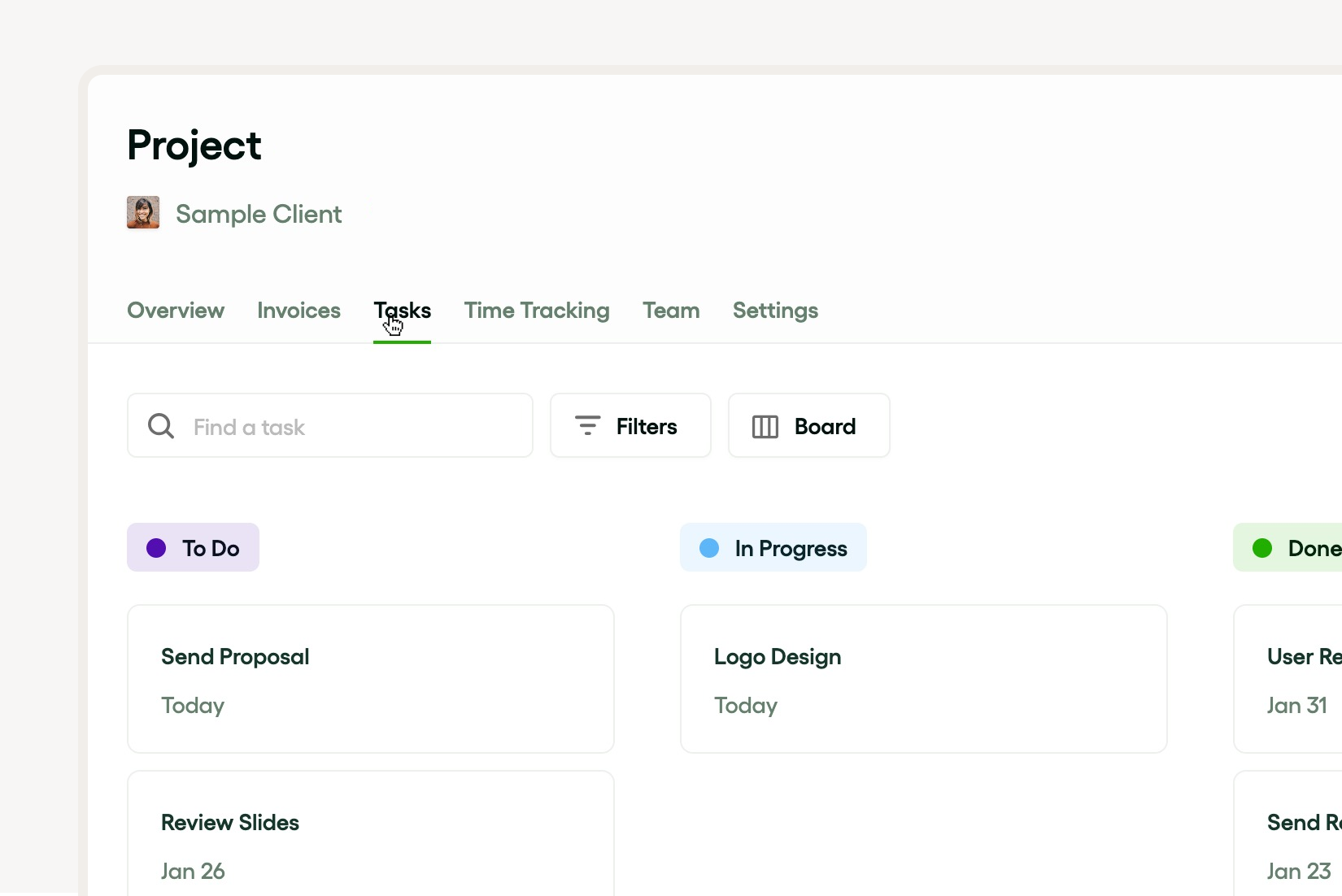Navigating the maze of project management, the cornerstone is undeniably project collaboration. This element not just enhances teamwork but is the scaffolding for effective task handling, project mapping, and crisp execution. Investing in top-notch collaboration tools isn’t just spending—it’s strategically fostering an environment ripe for communication and transparency, transforming groups into cohesive units.
Understanding the importance of project collaboration
In the realm of project management, collaboration isn’t just beneficial; it’s imperative. It catalyzes team synergy, carving out a space where strategies are born and tasks are streamlined. Armed with the right tools, teams can enhance transparency and boost communications, turning collaborative efforts into project milestones.
Defining project collaboration
At its core, project collaboration is about syncing teams through stellar tools to hit common goals. It's pivotal in project management, fueling a collaborative vibe through top-tier communication, robust task management, and clear project paths. It's the glue that binds project teams, empowering them with the tools to plan effectively, execute smoothly, and engage stakeholders throughout the journey.
The role of project collaboration in agencies
In agency settings, project collaboration is the linchpin that ensures smooth sailing. It heightens team coordination and efficiency, making use of cutting-edge tools to streamline task management and project workflows. These platforms amplify team chats, ensuring everyone’s in sync with the project aims and dancing to the same rhythm, which is crucial for maintaining a dynamic relationship with project players.
How to enhance project collaboration with Bonsai
Enhancing project collaboration with Bonsai revolves around using its features to streamline communication, improve task management, and optimize resource allocation.
To begin with, effective collaboration starts on clear and centralized communication. Bonsai provides a platform where team members can share files, leave comments, and receive notifications. By consolidating all project-related communication in one location, everyone remains informed and aligned, which minimizes misunderstandings and promotes a collaborative work environment.
Encourage your team to use Bonsai for all project discussions, updates, and document sharing to ensure transparency and accessibility.
Furthermore, Bonsai’s task management tools, such as Kanban boards and Gantt charts, are important for organizing and tracking project tasks. Assign tasks according to team members’ skills and availability, while also establishing clear priorities and deadlines.

These visual tools enable everyone to grasp their responsibilities and timelines, ensuring alignment. Regularly review task progress and make adjustments as necessary to keep the project on course. Clear task assignments and progress tracking help prevent overlaps and guarantee timely task completion, enhancing overall collaboration.
Finally, effective resource allocation is vital for maintaining a balanced workload and improving collaboration. Bonsai offers real-time insights into resource usage, allowing managers to monitor and adjust allocations as required. Use Bonsai’s resource planning features to assign tasks based on team members’ skills and availability, ensuring optimal utilization.
- Organize your team's workload, Establish capacity rates, Assign team hours. Record time off.
- Track workload in real time. Identify who’s overburdened instantly, make adjustments, and ensure projects stay within budget.
- Monitor resource usage and efficiency. Track each team member's profitability and time reports, and adjust as needed to stay within budget.

This strategy helps prevent overburdening team members and sustains productivity. Regularly evaluate resource allocation and make necessary adjustments to address any bottlenecks or imbalances.
By taking advantage of these features, you can enhance project collaboration and achieve better outcomes with Bonsai.
Key features of effective project collaboration
Effective project management is synonymous with fostering a collaborative climate. This involves crystal-clear communication, the deployment of agile collaboration tools, and strategic task handling. These elements are the gears that drive project planning and execution, ensuring every team member is tuned in and transparently pushing the collective agenda forward.
Real-time communication
The pulse of project management is real-time communication, essential for the fluid movement of ideas and decisions. It’s what keeps the project teams in the loop, ready to pivot or proceed at a moment’s notice. Collaboration tools are the conduits for this vital flow of information, ensuring clarity and coherence in every task and decision.
Task management
Task management is the backbone of project execution, setting the stage for team synergy and precise project mapping. It fosters an environment where transparency and communication intersect, making it easier for project stakeholders to stay informed and engaged. With robust collaboration tools, teams can navigate the project landscape with finesse, meeting objectives with precision.
File sharing and document management
The backbone of effective project management lies in adept file sharing and document management. These systems enhance teamwork by ensuring that everyone is on the same page, with easy access to necessary documents and updates. Effective file management supports strategic project planning and execution, keeping project goals aligned and clear.
Integration capabilities
For projects to reach their zenith, the integration of sophisticated collaboration tools is non-negotiable. These tools adapt seamlessly into the project environment, enhancing task management and fostering a transparent, communicative workspace. They’re vital cogs in the machinery of project planning and execution, essential for the smooth rollout of collaborative strategies and achieving project success.
Top project collaboration tools for agencies
Running a successful business agency requires integrated project management and team collaboration. Key project collaboration tools that foster a collaborative environment include Bonsai to streamline your entire business, Trello for task management, Slack for communication, and Asana for setting and tracking project objectives. These tools provide project transparency, facilitate project planning and execution, and aid in the development of effective project strategies.

Implementing such tools helps align project teams with the broader project environment and ensures project stakeholders are well-informed. Overall, these collaborative strategies streamline operations, enhance efficiency, and drive project success.
Bonsai: Top project management collaboration tool
Bonsai is a top-notch project management collaboration tool aimed at simplifying workflows and boosting team productivity. It features a wide range of tools, including task management, resource planning, and time tracking. With options like Kanban boards and Gantt charts, Bonsai makes it easy to visualize project timelines and monitor progress effectively.

A key highlight of Bonsai is its ability to promote strong collaboration and communication. The centralized platform enables team members to share files, leave comments, and receive notifications, keeping everyone on the same page and informed. This minimizes misunderstandings and strengthens teamwork.
Moreover, Bonsai offers real-time insights into resource allocation and usage, allowing managers to oversee and adjust resources as necessary. Comprehensive reporting and analytics support data-driven decision-making, enhancing overall project efficiency.
In short, Bonsai is an essential tool for any team aiming to refine their project management processes and achieve improved project results.
Exploring the features of Slack
Slack stands as one of the superior project collaboration tools due to its array of beneficial features. Primarily, it provides a collaborative environment that enhances team collaboration through seamless communication channels. It promotes project transparency, helping project teams closely monitor and manage project objectives.
This tool is convenient for project management, having features that facilitate task management, project planning, and smooth project execution. It also makes engaging with project stakeholders easy, aiding in the formulation of effective project strategies. Features such as file sharing, real-time messaging, and integrations with other software make Slack versatile and indispensable for modern organizations.
Benefits of using Trello for project management
Trello offers numerous benefits for project management. It facilitates seamless team collaboration in a project environment by providing a visual board where all tasks, deadlines, and responsibilities can be seen at a glance. This creates tremendous project transparency, enabling all project stakeholders to stay updated with the project objectives, planning, and execution.
As one of the leading project collaboration tools, Trello supports collaborative strategies by offering an intuitive platform where project teams can communicate effectively, manage tasks efficiently, and execute the project strategy successfully. Therefore, Trello significantly enhances project management and team collaboration.
Why agencies choose Asana for collaboration
Agencies choose Asana for its robust project management and team collaboration capabilities. This platform serves as one of the premier project collaboration tools, offering a collaborative environment that enhances the efficiency of project teams. It is widely acclaimed for its task management features, allowing easy project planning and execution.
Asana also scores high on project transparency, making the flow of communication smoother amongst project stakeholders. This not only aligns perfectly with the project strategy but also helps in achieving project objectives with relative ease.
Microsoft Teams: A comprehensive collaboration solution
Microsoft Teams functions as a comprehensive project management and collaboration tool. It streamlines team collaboration and project execution within a collaborative environment. The project environment enables project transparency, communication, and project planning.
This platform facilitates continuous engagement between project teams, enhancing project strategies and achieving project objectives. Tasks are meticulously organized, fostering a seamless task management process. Microsoft Teams has revolutionized project stakeholder engagement, making it an indispensable project collaboration tool.
Best practices for successful project collaboration
For successful project collaboration, project management must focus on building a collaborative environment. This involves effective communication, both within the project teams and with project stakeholders. The objectives and strategy of the project should be clearly defined and understood by all participants.
Utilizing project collaboration tools can facilitate collaborative strategies and foster a productive project environment. These tools enhance task management, ease project planning and execution, and promote project transparency.
Overall, the success of team collaboration heavily relies on a unified approach aligned with the project’s goals and objectives.
Establishing clear communication channels
Clear communication channels are critical in project management to facilitate team collaboration and ensure smooth project execution. A collaborative environment is essential to enhance understanding among project teams and keep everyone aligned with the project objectives.
Encouraging use of project collaboration tools is one collaborative strategy that can enhance task management and project transparency. Project stakeholders can monitor progress in real-time, facilitating better project planning and strategy formulation.
Ultimately, establishing clear communication channels contributes significantly to ensuring the success of any project management endeavor.
Setting defined roles and responsibilities
In the sphere of project management, defining roles and responsibilities is of utmost importance for efficient team collaboration. This process ensures that every member on the project team clearly understands their tasks and obligations, leading to greater project transparency and helping in the efficient utilization of project collaboration tools.

This collaborative strategy is also instrumental in creating an effective project environment. Clear communication of responsibilities enhances task management, and this ultimately results in successful project planning and execution. Furthermore, it aids in achieving project objectives and ensures all project stakeholders are on the same page.
Utilizing the right collaboration tools
Project management is significantly more efficient when the right project collaboration tools are put into action. These tools facilitate strong team collaboration, fostering a dynamic and collaborative environment where project teams can communicate and work seamlessly towards common project objectives.
Task management and project planning are made easier, pushing for diligent project execution. The use of collaboration tools also encourages project transparency, allowing every project stakeholder to track milestones and project progression. Hence, it’s essential to identify and utilize the right collaboration tools to implement effective collaborative strategies within a project environment.
Overcoming common challenges in project collaboration
Tackling project management hurdles often hinges on setting up a collaborative framework that sidesteps typical teamwork obstacles. A suite of project collaboration tools can be a game-changer, ensuring transparency and facilitating smooth teamwork. Key moves include crystal-clear communication of goals, diligent task oversight, and regular strategic check-ins—all essential to keep every stakeholder in sync and strategies transparent.
Managing remote teams
The secret sauce to managing remote teams lies in robust communication, leveraging efficient tools, and nurturing a collaborative spirit. These elements are vital for knitting teams together and pushing project goals across the finish line. Embracing shared task management and embedding collaborative tactics into project workflows ensures everyone stays aligned, boosting productivity regardless of physical location.
Dealing with time zone differences
Mastering project management across various time zones demands sharp communication strategies and dynamic use of collaboration tools. These tools are crucial for maintaining project momentum and clarity. Strategies to bridge the time gap include setting unified project goals, scheduling cross-time zone meetings wisely, and ensuring all tools are accessible around the clock, fostering a productive environment despite geographical spreads.
Ensuring data security in collaborative environments
In the digital tapestry of project management, securing data is non-negotiable. Integrating security-focused collaborative strategies ensures that teams can share and manage data securely across platforms. Establishing a secure environment boosts transparency and maintains integrity without compromising sensitive information, aligning project goals with stringent security protocols to build stakeholder trust.
Measuring the success of project collaboration
To succeed in any project, it's essential to develop a strong collaboration culture. One way to do this is through mastering project management metrics which not only track progress but also foster teamwork. Remember, effective teamwork starts with clear communication and setting achievable goals.
Evaluating project collaboration success involves several metrics within the project ecosystem. A thriving collaborative environment should enhance communication, teamwork, and goal attainment. Additionally, effective use of collaboration tools underpins project success, with efficient task management and regular strategic reviews playing critical roles. These elements collectively forge a transparent and smooth project execution path, marking the benchmarks of collaborative success.
Key performance indicators for project collaboration
Key Performance Indicators (KPIs) are vital for refining project collaboration. They enhance management by bolstering team interaction and optimizing tool use. Essential KPIs include meeting project timelines, maintaining active stakeholder communication, and achieving goals as per strategic planning. Tracking these indicators helps steer teams toward enhancing collaborative methods and elevating project outcomes.
Feedback and continuous improvement in collaboration
Feedback is the cornerstone of progressive project management, cultivating a learning and evolving project environment. Collaboration tools that facilitate feedback not only streamline communication but also refine task handling and strategic alignment. Embracing a culture of continuous feedback encourages ongoing improvement, crucial for aligning strategies and achieving project excellence.








